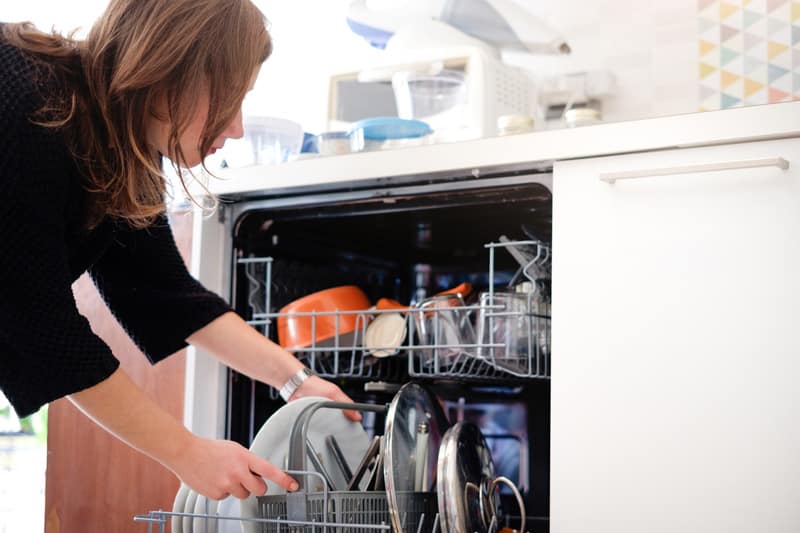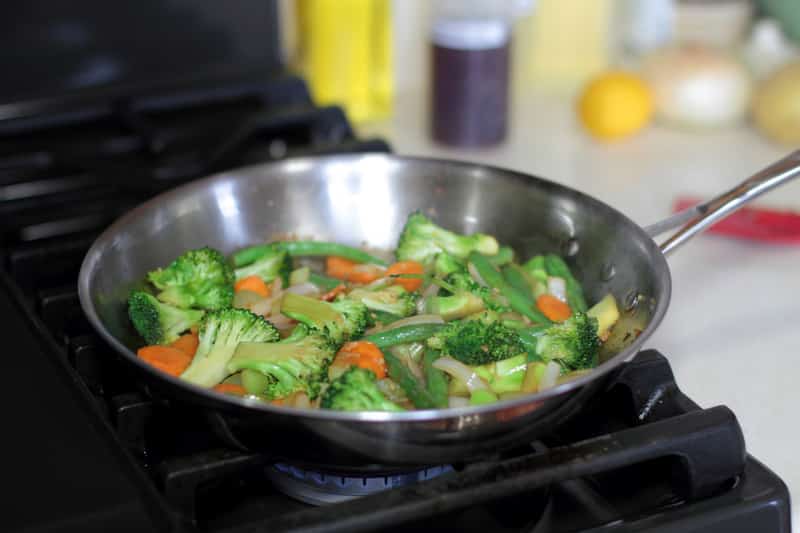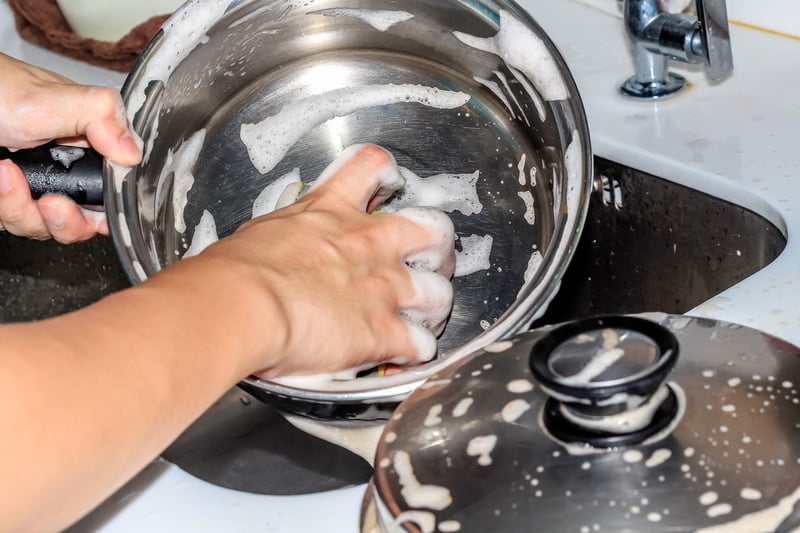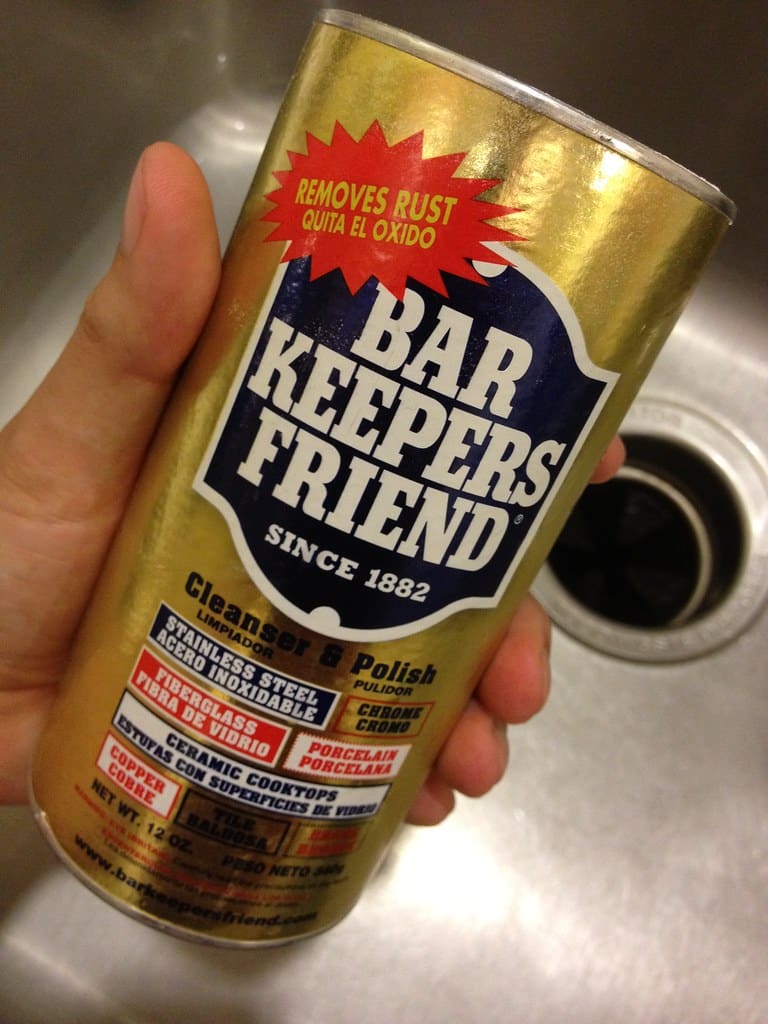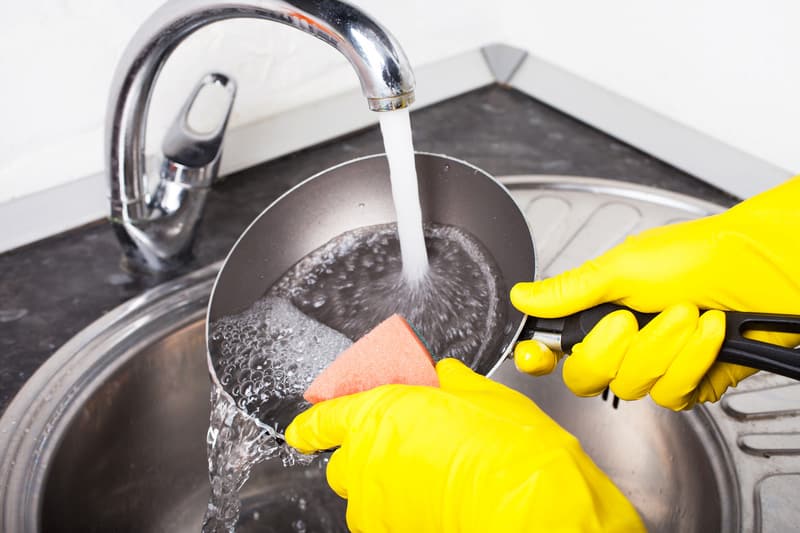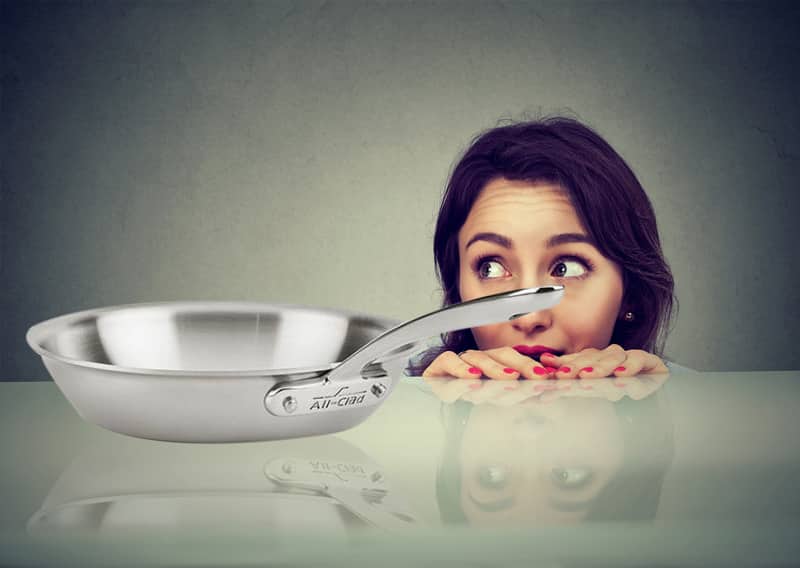
All-clad has become known in foodie circles as an excellent cookware brand. All-clad cookware features stainless steel exterior “cladding” bonded to an aluminum or copper core.
The core gives superior heat conduction while the stainless steel exterior is durable, attractive, and does not react with food. However, while these pans are durable, they are not indestructible and do require careful treatment if they are going to last a lifetime as the guarantee promises.
Deterioration can occur due to incorrect handling and lack of care. Some problems people encounter that lead them to say they’re ruined their All-clad cookware are:
- A loss of shine on the surface
- Stains on the surface
- Warping or buckling
- Blue stains
- Scratches on the shiny surface
- Burnt-on food
How to look after your All-clad cookware and prevent damage
- Avoid putting it in the dishwasher
While the cookware is technically dishwasher safe, the manufacturers recommend washing it in hot soapy water with a sponge. The high heat and harsh detergents used in dishwashers can corrode the surface.
- Look after the non-stick pans carefully
All-clad non-stick pans should be used on low or medium heat only. Metal utensils or harsh abrasives must not be used as these will damage the non-stick surface.
- Don’t aerosol cooking sprays
The manufacturers don’t give a reason, but they suggest you don’t use aerosol cooking sprays on any of their cookware. Presumably, they damage the surface.
- Be careful with salt
Salt can cause pitting of the stainless steel surface. While of course, you’re going to cook with salt, it should be added after the food is already boiling to enable it to dissolve quickly and not sit on the surface of the pan.
- Do not overheat the cookware
Overheating can cause blue or brown stains on the surface. Never heat the cookware if there is nothing inside it. Unless you’re boiling water, you can cook most things on medium heat.
All-clad’s aluminum core distributes heat fast and evenly so it is unnecessary to cook over a high flame. Doing so may result in blue stains called “heat tint.”
- Be careful what you clean with
Abrasive scouring pads or pastes will scratch the stainless steel, spoiling its shine. The finish will also be damaged by chlorine-based products like bleaches, oven cleaners, or other harsh chemicals. Nylon scrubbing pads are best.
- Avoid sudden temperature changes
Don’t plunge a hot pan directly into cold water. Rather fill it with hot water or leave it to cool down first. Sudden temperature changes may cause warping.
I’ve Ruined My All-Clad Pan
What Should I Do?
Okay, so it’s too late and you think you’ve ruined your All-clad saucepan. Can it be saved? Maybe…try these tips.
If it’s burned:
- Allow the pan to cool down.
- Fill it with warm water and leave it to soak overnight. This should loosen a lot of the excess burnt food. Use a long-handled nylon brush to remove as much as you can.
- Take a product called Bar Keeper’s Friend which is a very gentle abrasive and recommended by All-clad, onto a soft cloth. Gently rub in small circular motions over the burned areas. You can only do this with stainless steel, not non-stick pans.
If there are blue stains inside the pot:
- Fill the pot with a mixture of vinegar and water. Bring this to the boil then leave it overnight. Rinse and dry.
- All-clad cleverly sells its own brand of stainless steel cleaner and polish. It’s worth a try.
General cleaning tips for ruined, stained, grimy, pots
- Coat the pan in a cleansing paste of cream of tartar or Bar Keeper’s Friend and hot water. Leave it for an hour. Scrub the pan with a non-abrasive nylon sponge or a firm brush. Rinse and dry.
- If there are still stains, buff the pan while it’s dry. Coat the surface with a powdered cleansing agent. Use a cloth and buff the pot from the center moving out. Rinse and dry.
- For hard-to-reach places like around the handle where grime collects, use a small, firm brush and a toothpick. Make a paste of your chosen cleanser and work with your tools to get all the grime off.
- To remove water stains from high calcium or iron levels, put 3 parts of water and one part of white vinegar into your pot. Bring it to a boil then allow it to cool. Pour the liquid out then wash the pan with hot water and dish soap. Dry.
We recommend wearing kitchen gloves to protect your hands while doing any of the above chores. We hope this article has helped you realize that your pan probably isn’t ruined, even if it is badly burned or stained.
A little elbow grease and the right tools will soon have it looking new!
